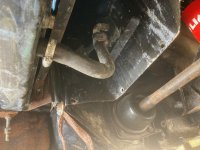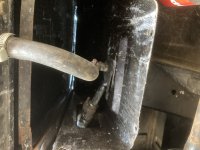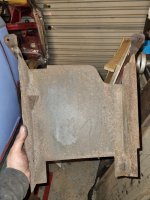Hi,
Just spotted this thread.
As already confirmed, the air is drawn in through the side vents (louvres) and then pushed through the rad to exit under the engine bay. The panel in question (looks like a scoop fitted in reverse with a couple of holes to the sides) acts as a baffle to reduce the risk of air back flow when driving forward.
It's important to have the engine 'floor' panels in place to prevent the air recirculating into the engine bay. While driving this works okay but if you get stuck in stationary traffic the hot air inevitably fills the engine bay.
If you see my thread on Connie
here you can see how I've built additional ducting to take the hot air beyond the rear. I've kept the holes in the scoop as this acts as a ram effect to push the hot air through when driving.
If you look at my thread you will also see how I've fitted a couple of electric fans, one just in front of the rad (inside the cowling, between the rad and the normal fan) and the other behind the offside vents. I had hoped to dispense with the standard fan but without it the electric fans were running all the time.
The set up works really well... you get burnt legs if you stand behind the van when fully up to temperature and all (3) fans are running.
You will also see that I've fitted a 4-branch exhaust, this meant the old 'dustbin' air filter wouldn't fit. So I've fitted a piece of stainless steel tubing from the rubber gaiter on top of the carb and a K&N filer on the other end so that it draws cool air from the near side vents. I won't be using the van in winter so the cold running option (taking hot air off the exhaust) isn't needed.
I've also added an electric fuel pump and upgraded to 123-electronic ignition. The problems with hot starting are a thing of the past... it was really embarrassing having to wait up to an hour a fuel pumps for Connie to cool down and clear the vapour lock before she would start again.
Note: I've only had a couple of runs with her since I got her back on the road, after having the engine & rad sitting dry for a few years. Even though I flushed the cooling system several times before refitting, on the last run the cabin heater stopped working. I think getting her running back up to temperature for a good run has loosened all the rust and gunk inside and clogged up the cabin heater matrix. My first job this year (before I carry on with the restoration) is to flush everything out again.
Hope this helps.





